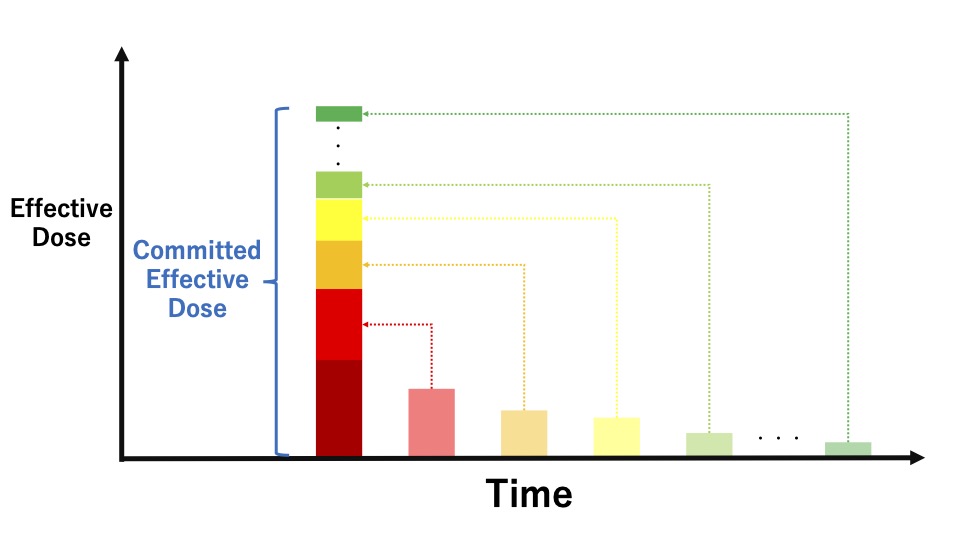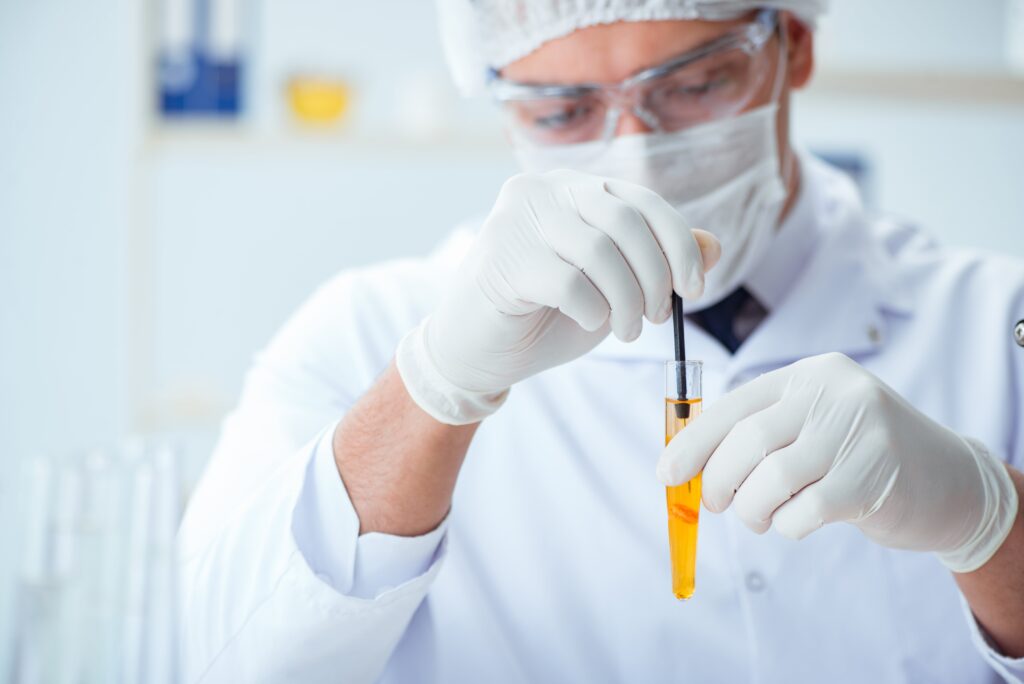Hello, everyone. My name is Daichi, an expert providing the information on the radiation issues in an easy-to-understand manner.
Today, I would like to respond to the following question(s)/request(s):
– When I study something related with radiation, I have heard the word as an index representing the exposure dose: ‘Committed effective dose’, and I would like to know specifically the meaning of the word.
Table of contents of this article
- The committed effective dose is effective dose of XXX exposure.
- How to calculate the committed effective dose
- How to calculate the committed effective dose derived from the food intake in the past
- Measurement from outside of body
- Bioassay
- Summary
I have been involved with the radiation-relevant issues, like the policy on the decontamination activities and the management of the Interim Storage Facility, after the accident of the Fukushima Daiichi Nuclear Power Plant in 2011.
I received a doctorate in the field of radiation, while working in Fukushima.
The committed effective dose is effective dose of XXX exposure.

First of all, a key point, which we need to know, is that the committed effective dose is effective dose of ‘internal exposure’.
The word ‘Effective dose’ includes effective doses derived from both internal dose and external dose, but when especially impact caused by internal exposure is focused on, the index ‘Committed effective dose’ is used.
‘To commit’ includes a meaning ‘to leave temporarily something important’ like money, but of course the valuables have nothing to do with this theme.
Then why is the word ‘committed’ used here?
Please take a look at the following figure.

If people intake radioactive materials through e.g. inhalation, the amount of the radioactive materials reduces through
– Disintegration of atom cores of the radioactive materials taken, and
– Excretion through metabolism (urine and stool)
The committed effective dose is estimated exposed dose after the intake of the radioactive materials during the lifetime.
In other words, the exposure dose of whole life is integrated in the year of the exposure.
This is the reason why the word ‘committed’ is used.
By the way, the years to integrate the exposure dose are defined as follows:
– Adult: 50 years after the intake
– Children: Years for them to become 70 years old
If you would like to learn more about other indices, with the unit ‘Sievert’, please visit this article.
How to calculate the committed effective dose

Then, how is the committed effective dose calculated?
Basically, it is the same methodology with the one to calculate the effective dose.
That is, it is calculated, taking account of the difference of impact due to kinds of radiation, as well as the difference of types of organs to be impacted, followed by estimation of impact on whole body.
For details please visit this article.
It is, however, as is the case with the effective dose, difficult to calculate the dose to each organ.
Therefore, in fact, it is possible to calculate it using the committed effective dose coefficient.
Specifically, it can be calculated by the following equation.
Committed effective dose (μSv) = Radioactivity of radioactive materials taken (Bq) × Committed effective dose coefficient (μSv/Bq)
A various kinds of committed effective dose coefficients are specifically provided, for example, according to types of radioactive materials, ages of exposure, exposure pathways (oral intake or inhalation intake).
I would like to skip too much detail regarding each coefficient here, but will explain it when necessary.
How to calculate the committed effective dose derived from the food intake in the past

It is possible by using the methodologies mentioned above, to estimate dose derived from foods taken in the near future, because their radioactivity is measurable.
But how can we evaluate the dose derived from the food which we already took in the past?
It seems to be more common, that the dose is needed to be evaluated, derived from the one happened in the past, rather than the one happening in the future, such as an exposure after environment contamination caused by an accident of a nuclear power plant.
The following is two specific examples of methodology to evaluate the internal dose derived from the radioactive materials taken in the past.
Measurement from outside of a body
This is a method, to monitor the amount of radiation emitted from inside a body, followed by estimating the amount of radioactive materials taken.
A representative example for this measurement is to use a whole body counter, as shown in the below figure.
This method makes it possible to estimate the amount of internal dose of whole body.
There are also instruments to estimate the internal dose to particular organs like thyroid.

Reference: Decontamination archive site (http://josen.env.go.jp/archive/detail/?TO-03-P0031&category)
As aforementioned, the amount of radioactive materials decreases due to the disintegration of atom cores and the metabolism of human body even after intake of the radioactive materials.
However, it is not possible to measure very low level of radioactivity less than the detection limit.
Therefore, it is necessary to measure the internal dose relatively shortly after the intake to estimate it, although it depends on the capacity of the instrument.
Moreover, regarding the dose to children, it is necessary to monitor much earlier, because speed of metabolism is faster than adults.
Bioassay

By bioassay, the amount of radioactive materials taken can be estimated, by monitoring the amount of radioactive materials in urine and so on.
As is the case with the measurement from outside of a body, it is necessary to monitor as soon as possible to detect the radioactive materials.
Needless to say, it is preferable that exposure dose is very low, such as less than detection limit, if the exposure itself is not desirable like exposure derived from radioactive materials released by an accident of a nuclear power plant.
Summary
The committed effective dose is the effective dose derived from the internal exposure and it is calculated, under the assumption that internal exposure of the year onward, for whole life, is happened in the year of the exposure.
Specifically, it is calculated by multiplying the radioactivity concentrations of stuff (e.g. foods, air) taken into body, by the committed effective dose coefficients, which are determined by each type of radioactive material and exposure pathway.
Regarding the internal exposure derived from radioactive materials taken in the past, it is not possible to directly monitor radioactivity of stuff taken.
However, as long as it remains in the body to some extent, it can be estimated by measurement from outside a body or bioassay.
By the way, the following videos are created, which explain the almost same contents above.
Please take a look at them at your convenience.
– Japanese version
– English version
This is the end of this article.
You can read the same article in Japanese here.
Thank you very much for reading this article.
See you next time!



コメント